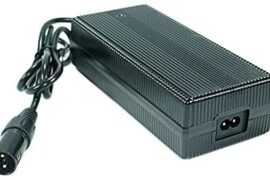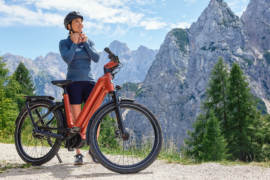Try our Products at our Electric Bike Shops in Bristol, Cambridge, Oxford or York
Although modern ebikes are incredibly robust, as with their analogue cousins, they need some care to stay in top shape and avoid brake downs.

A battery is one of the most expensive parts of your ebike. An e-bike is just a hefty bike without a battery, so it pays to keep the battery in good shape. Modern electric bikes use lithium-ion batteries, and while these batteries are powerful and durable, there are some things you should avoid doing to ensure your battery lasts as long as possible.
It is essential to consider the conditions in which your bike is stored and charged. According to Shimano, charging at 0 to 40°C and operating at -10° to 50°C are safe temperature ranges. While batteries can operate at those temperatures, they will last longer if they are kept at about 20C or room temperature. Therefore, if the bike is stored in an unheated cold garage in the winter, it would be a good idea to remove the battery and bring it indoors or consider keeping the bike somewhere warmer in the winter months.
On the topic of storage, water ingress could damage the mechanical and electrical components and should be avoided. Keeping the bike inside and protected from the elements is the best way to keep your electric bike in the best possible condition. No bike, either electric or otherwise, should ever be stored outside, even when covered, since humidity, rain, etc., can cause corrosion, seals can dry out, and it’s generally bad news for the bike. Add in electric components and outdoor storage is a recipe for bad results.
It is recommended that electric bikes not be charged overnight or unattended. You should also use the charger provided by the manufacturer, and you should not use a battery that changes shape, emits an odour, or becomes excessively hot.
While we’re talking about best charging best practices, batteries work best between 20% and 80% charge, and doing a big charge from 20-80% is preferable to many small charges. For example, charge your bike almost fully every 4 or 5 days when you reach approximately 20% battery, rather than charging it daily if you know your commute uses 10% battery each way. It’s also best to charge your ebike just before you plan to ride rather than right after you’ve finished a ride.
Occasionally draining the battery to 0% is safe, but don’t leave it there – recharge it as soon as possible. Do not charge to 100% frequently if you do not require the full range, though it is helpful to do this occasionally to calibrate the cells. If the bike is being stored, it’s best to keep it around 40-60% charged and check it periodically.
If your bike has a magnetic charge port, inspect it regularly for small metallic objects stuck to it. Also, be sure to inspect the charger cable before charging the bike since something as simple as a staple can arc across the terminals and render it useless.
Summary
This guide is by no means exhaustive but should provide a good starting point. Contacting a dealer is usually the best thing to do, and often they can provide more specific information on your bike model, sometimes diagnosing things over the phone or email. At Electric Bike Sales, we are always here to help whether you brought your bike from us or not, so don’t be afraid to get in touch. We have stores in Oxford, Cambridge, Bristol and York and our website www.electricbikesales.co.uk. Contact us HERE for more details.




